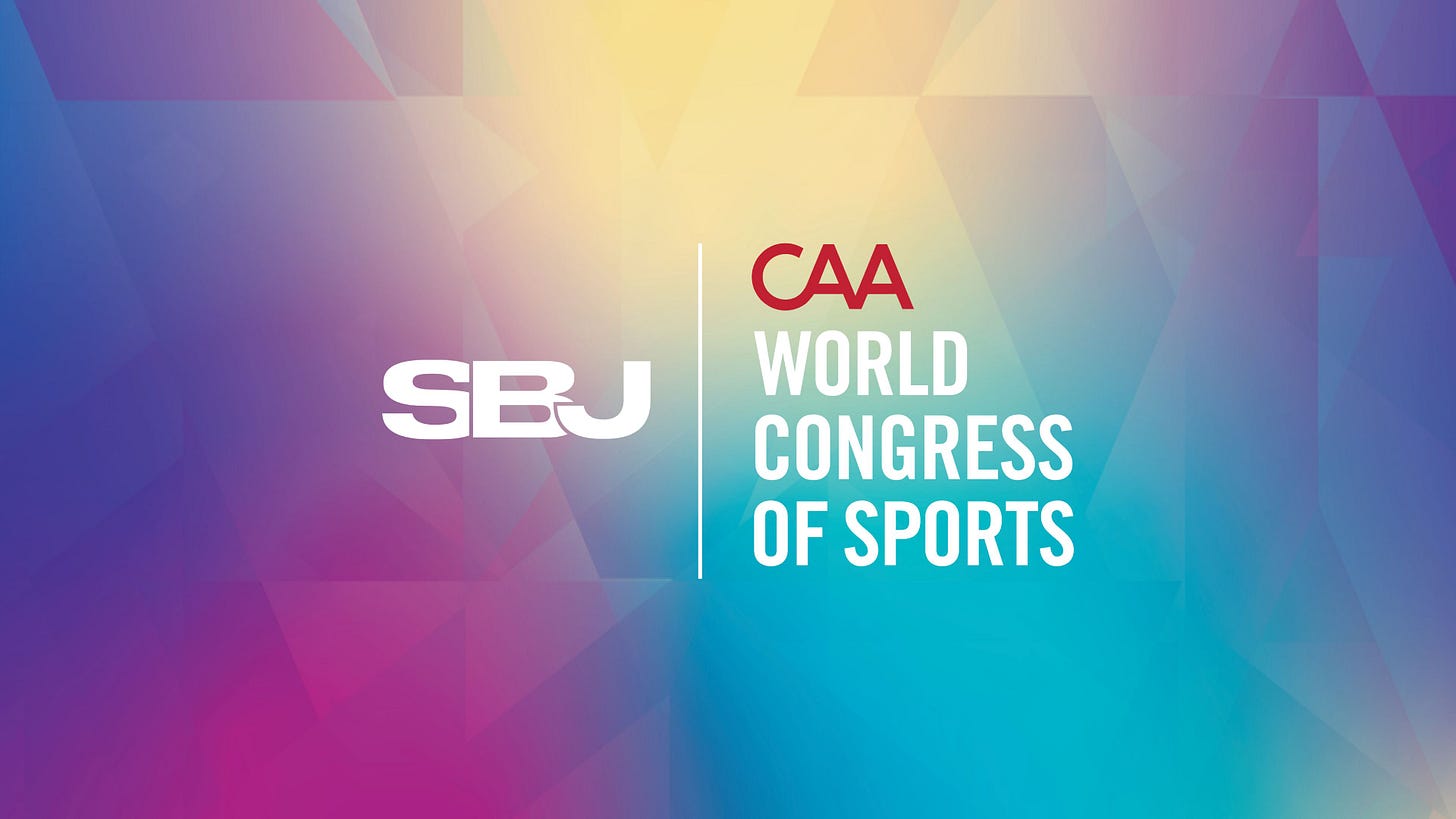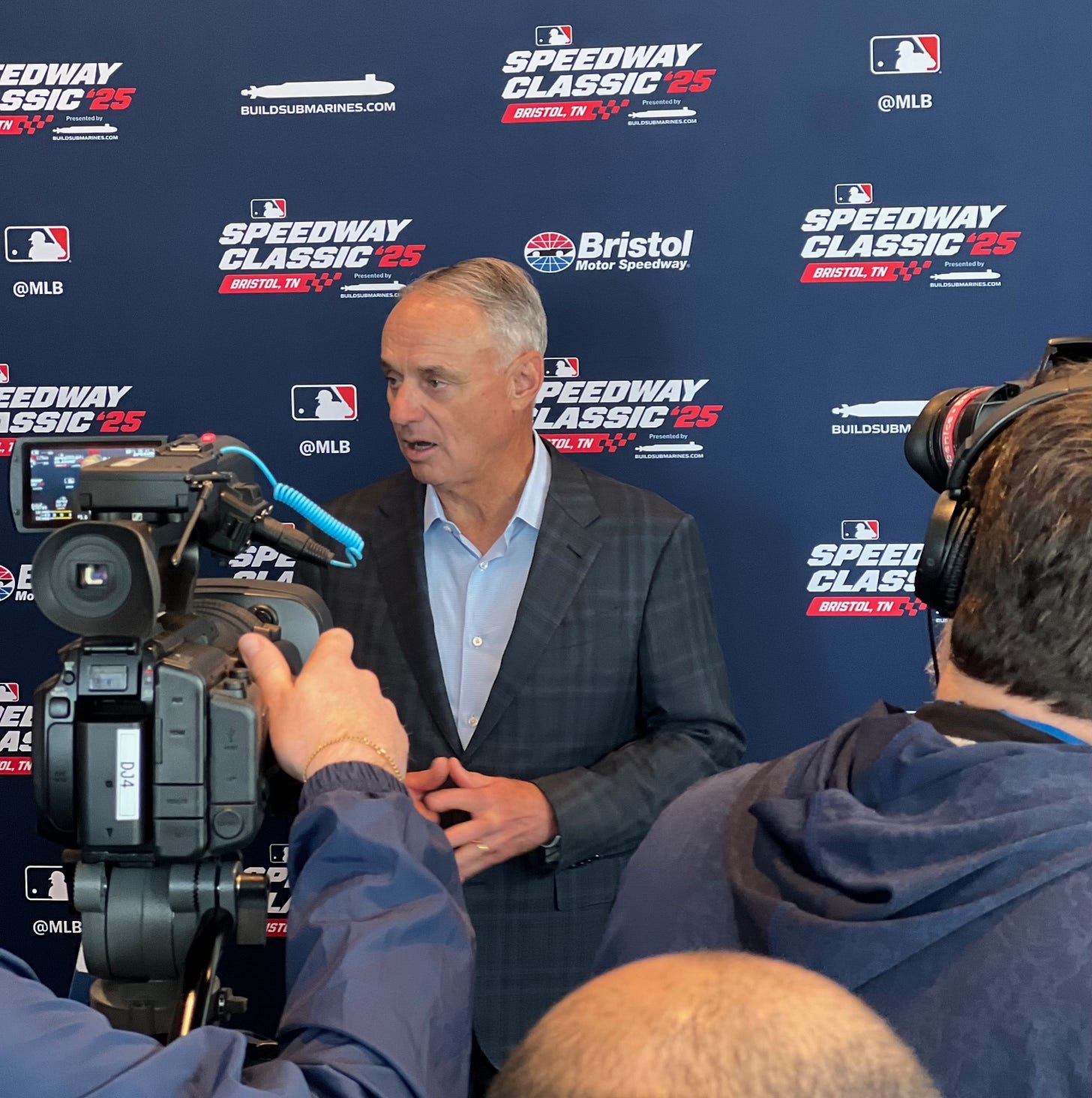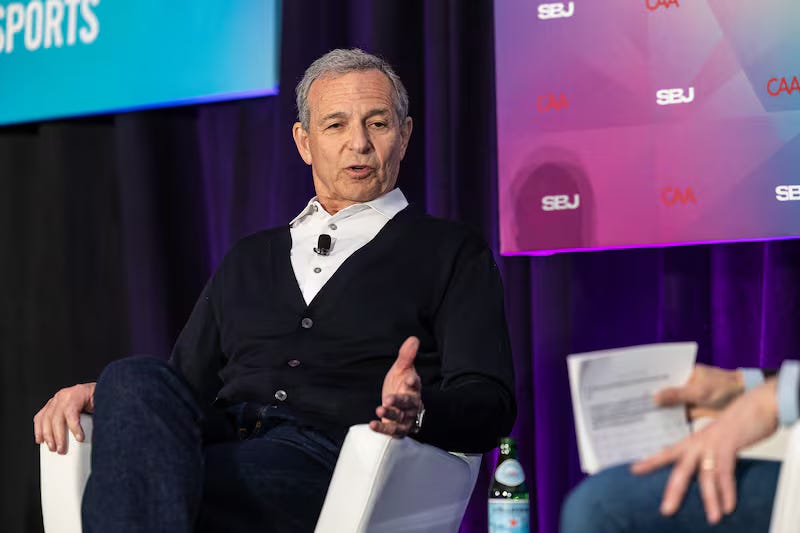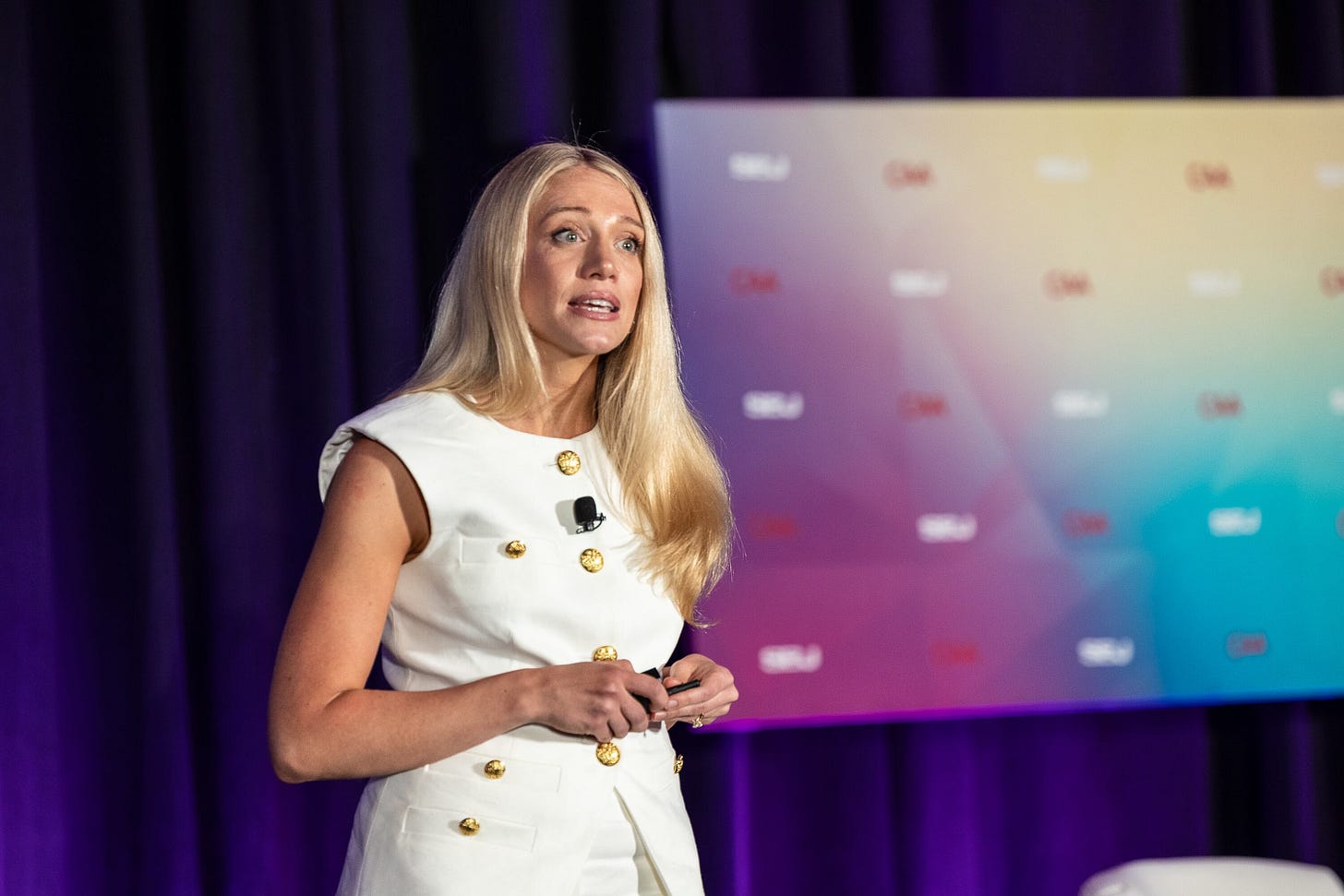2025 CAA World Congress of Sports Recap
The titans of sports are still bullish on the industry's outlook, and that's a good thing for fashion.
Last week, the Sports Business Journal and CAA co-hosted the 2025 World Congress of Sports in Nashville. Thought of as one of the premiere conferences in the industry, the event attracted 1,000+ attendees from every part of the sports ecosystem. Fireside chat and keynote speakers included execs like Adam Silver (NBA Commissioner), Bob Iger (Disney CEO), Alexis Ohanian (Reddit founder and co-owner of Angel City FC), Andrea Fairchild (SVP of Global Sponsorship Strategy at Visa) and plenty more. The panels touched on everything from hospitality in and around arenas to how private equity can be a great cash infusion for teams (I have my own thoughts around that but I digress) but I went to the conference in person to find a few interesting angles around the intersection of sports and fashion. The inferences I drew below make for a compelling case for brands to go much deeper into or create their first sports marketing strategy.
Sports Industry is Resilient Against Market Forces
It’s hard hosting a conference during a time of economic uncertainty and not have most of the panelists touch on the subject. With all the doom and gloom that every industry is discussing (their worries are absolutely valid) it was nice hearing that leaders believe sports tend to be fairly insulated against market downturns. Fans prioritize watching and going to games in person so the share of wallet for their favorite college or sports team should still remain strong. Especially when times are tough, people yearn for community and emotional connection that sports very easily offer. Teams and leagues are doing everything they can to ensure they are top of mind when consumers might be faced with competing financial priorities.
Fashion Industry Implication: Consider spending a higher mix of your budget on sports instead of other industries. Sure, everyone loves a good collaboration between two beloved brands. But in a time where the vast majority of luxury and apparel companies are missing their earnings/projected revenue, and softness in the U.S. market is felt by all of the major players, it might be time to err on the side of caution. Sports marketing is already a proven ground for return on marketing spend for B2B and B2C companies alike. Turning your sights toward in-game experiential marketing and/or digital activations will be a strong option.
Continued Investment in the Fan Experience
Team and league leadership resoundingly agree that thinking about the fan experience is a 24/7 job. How they talk about their team during the offseason, how technology can make fans' lives easier on-site, and what to prioritize for fans who can’t be at games in person are all topics that are constantly discussed. When I asked Commissioner Manfred about the partnership between the MLB and Ralph Lauren, he was very clear on his stance. “I think it’s important when you have an everyday sport like we are to reach out into other parts of our culture like food and beverage, music, and fashion. In order to attract people to the game who may not be predisposed, I think fashion in particular is one where we can use relationships with companies like Ralph Lauren to market our players. That’s really positive for them [the players] and positive for the sport overall.”
Fashion Industry Implication: Successful sports partnerships can come in many forms. Earlier this year GQ hosted a runway during SuperBowl weekend called the GQ Bowl. The storied magazine decided to host a runway in partnership with Bode for their newly released recreation line. The event was livestreamed/recorded and should probably be a reoccurring event moving forward. Tons of people watched live on YouTube and interacted digitally. If brands replicated something similar to this and sell tickets/make available online, this could be an incredibly massive awareness play for sports fans who aren’t as familiar with your brand and push people deeper into your marketing funnel through transaction. Economic slowdowns force companies to think outside the box and this is a great way to do it.
Heightened Focus on TV Rights and Streaming
When it comes to watching games of your favorite professional team, there unfortunately isn’t an easy answer. Without league passes, some fans are forced to find alternate ways to watch because media rights held by local or national companies invoke blackout restrictions. And besides strengthening the loyalty of fans to a team, league offices are very focused on getting as many eyeballs on every game as possible. This was another point that everyone was in agreement on. People want to consolidated how to watch all of their sports, and this will translate into incredible opportunities for advertisers in the short and long term.
Fashion Industry Implication: Going deeper into advertising could unlock a higher ROI. We can complain about seeing ads while streaming live games/watching TV all we want, but the fact of the matter is that it persists because it works. The global television advertising market is valued at nearly a quarter of a trillion dollars. Granted, not all of this money comes specifically from sporting events, but when you realize SuperBowl ad costs continue to increase year over year, top rivalry games at the collegiate level will always have millions of eyeballs and impressions, etc., it becomes a compelling narrative. Marketing attribution is already a difficult task, and instead of focusing on print ads or large billboards, brands can get into television advertising and work with a host of digital agencies to help track ROAS (Return on Ad Spend).
Teams Not Catering to Women are Missing out on Millions in Revenue
One of my favorite sessions of the conference was titled Harnessing the Power of Female Fandom hosted by Lily Checketts Shimbashi. Lily is the founder and CEO of
, a media publication that is catered towards women and is “your go-to source for sports excitement with a feminine twist.” She’s passionate about spotlighting the positive impact women can have on the global sports industry, and she had plenty of statistics to back it up. 72% of women in the US consider themselves sports fans and a third of those have developed their fandom within the last 5 years. Women also control over 60% of all wealth in the US and make up 85% of all consumer purchases. Finally, women’s sports merchandise has an estimated value of $4b per year.Fashion Industry Implication: Brands who can license league/team merchandise and cater to the growing female fanbases are poised to win big. With the rise of aggregator companies like Fanatics giving a platform to small brands, I think we’re at the precipice of seeing a handful of clothing companies take massive chunks of marketshare within team and league apparel. They just need to understand what women want. Take for example Off Season, the brand that Kristin Juszczyk launched after going viral for the handcrafted pieces she made for Taylor Swift. At the time of this publishing, several sizes and full SKUs of higher priced items are completely sold out. While the company currently sells unisex pieces, someone like Kristin at the helm can always design something with the female sports fan in mind. As her brand expands outside of cold weather gear into other popular products, it’s easy to see how with the right go-to-market strategy, she could easily attract women from every NFL team fanbase and strengthen the relationships with the teams she produces for now. Getting a license to produce clothing with team logos might be a challenge, but if you’re able to secure one, the world is your oyster.






Love to see that women representation continue to be good for sports but also a profitable endeavor. Great article!
Thanks for the shoutout Nick! Women belong in sports spaces, and we love seeing you recognize that too.